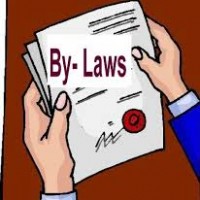What is a zoning by-law Ontario

What is a zoning by-law Ontario
Citizens’ Guide 3 – Zoning By-laws PDF (377 KB)
What is a zoning by-law
A zoning by-law controls the use of land in your community. It states exactly:
- how land may be used
- where buildings and other structures can be located
- the types of buildings that are permitted and how they may be used
- the lot sizes and dimensions, parking requirements, building heights and setbacks from the street.
An official plan sets out your municipality’s general policies for future land use. Zoning by-laws put the plan into effect and provide for its day-to-day administration. They contain specific requirements that are legally enforceable. Construction or new development that doesn’t comply with a zoning by-law is not allowed, and the municipality will refuse to issue a building permit.
Many municipalities have a comprehensive zoning by-law that divides the municipality into different land use zones, with detailed maps. The by-law specifies the permitted uses (e.g. commercial or residential) and the required standards (e.g. building size and location) in each zone.
Some rural municipalities may have a free-standing zoning by-law that covers only specific property that an owner proposes to develop.
Why do you need a zoning by-law?
A zoning by-law:
- implements the objectives and policies of a municipality’s official plan (See Official Plans, No. 2 in the series.)
- provides a legal way of managing land use and future development
- in addition to the official plan, protects you from conflicting and possibly dangerous land uses in your community.
What is a zoning by-law amendment?
If you want to use or develop your property in a way that is not allowed by the zoning by-law, you may apply for a zoning change, also known as a zoning by-law amendment or a rezoning. But council can consider a change only if the new use is allowed by the official plan.
Before you apply for rezoning, you should talk to the municipal staff for advice and information. You must complete an application form which requires information identified by the Minister and the municipality. Most municipalities require that you pay an application fee.
The process for dealing with zoning by-law amendments is the same as for a zoning by-law. If local council refuses your zoning application, or if it does not make a decision within 120 days of the receipt of your application containing the prescribed information, you may appeal to the Ontario Municipal Board.
The Ontario Municipal Board is an independent administrative tribunal that is responsible for hearing appeals and that decides on a variety of contentious municipal matters. (See the Ontario Municipal Board,No. 6 in the series.)
How is a zoning by-law passed?
When council decides to pass a zoning by-law, it must first give as much information as possible to the public. There must also be at least one public meeting before a by-law is passed and everyone who attends the meeting must have a chance to speak. Notice of this meeting is given at least 20 days in advance, either through local newspapers or by mail and posted notice. An open house information session is also required for a by-law being brought into conformity with an official plan which has been updated as part of the official plan’s five-year review update. A municipality is required to update its zoning by-law no less than three years after the approval of an official plan five-year review.
The Planning Act encourages early involvement and the use of mediation techniques to resolve any conflicts. Make sure you make your views known early in the planning process by making an oral submission at the public meeting or a written submission to council before it passes the by-law. If you don’t, you are not entitled to appeal a by-law after it is passed.
Your local council may also consult with interested agencies before it makes a decision. After hearing everyone’s concerns, council may decide to pass, change or reject the proposed by-law. If it decides to make some changes, it may also decide to hold another public meeting.
Once council has passed the by-law, it must give notice of the by-law’s passing within 15 days. Any person or public body that meets certain requirements may, not later than 20 days after the notice of the passing of the by-law is given, appeal to the Ontario Municipal Board by filing a notice of appeal with the municipal clerk. The appeal should set out the objections to the by-law and the reasons in support of the objections. The fee required by the Ontario Municipal Board must be paid at the same time.

How are zoning by-laws evaluated?
When it considers a zoning by-law, the council evaluates it against criteria such as:
- conformity with the official plan and compatibility with adjacent uses of land
- suitability of the land for the proposed purpose, including the size and shape of the lot(s) being created
- adequacy of vehicular access, water supply, sewage disposal
- the risk of flooding.
When council considers a zoning by-law, its decision shall be consistent with the Provincial Policy Statement issued under the Planning Act. The Provincial Policy Statement contains clear, overall policy directions on matters of provincial interest related to land use planning and development. The “shall be consistent with” rule means that a council is obliged to ensure that the policies of the Provincial Policy Statement are applied as an essential part of the land use planning decision-making process. It is expected that the council will implement the Provincial Policy Statement in the context of other planning objectives and local circumstances. (See The Planning Act, No. 1 in the series, and the Provincial Policy Statement, 2005. Both may be obtained by visiting the Ministry website at: ontario.ca/mah or through the government offices listed at the end of this guide.)
How can you get involved?
If you have concerns about a proposed zoning by-law or amendment that may affect you, you should:
- find out as much as possible about the proposed by-law and how it affects your property
- go to any information sessions, including open houses and public meetings, to give your opinions
- discuss the proposal with municipal staff and council members
- make a written submission to council.
If you have any concerns, you should make sure that you let council know about them early in the process. Council will then have time to think about what you have said and may make changes before the by-law is passed.
What rights of appeal do you have?
A person or a public body who makes oral submissions at a public meeting or submits written submissions prior to the passing of a zoning by-law or amendment may appeal a council’s decision, with some exceptions (see below).
Appeals to the Ontario Municipal Board can be made in two different ways:
-
The applicant, the Minister and any person or public body who made oral submissions at a public meeting or written submissions before the by-law was passed, may appeal the council’s passage of a zoning by-law to the Ontario Municipal Board within 20 days from the date the notice of the passage of the by-law is given. The notice of appeal should be filed with the municipal clerk.
-
The applicant and the Minister may appeal to the Ontario Municipal Board if the council refuses or fails to act on such a request within 120 days of the receipt of the prescribed information. The notice of appeal should be filed with the municipal clerk.
Your appeal must be accompanied by written reasons and the fee required by the Ontario Municipal Board.
Generally, appeals are not permitted in the following three circumstances:
- proposed amendments that would implement an alteration to the boundary of an “area of settlement” or the establishment of a new “area of settlement”
- proposed amendments that would remove land from “an area of employment”
- by-laws passed to permit a second unit residential dwelling.
What are the Ontario Municipal Board’s powers relating to appeals?
In appeal cases, the Ontario Municipal Board holds a hearing at which you and other affected parties will have an opportunity to present and discuss your views. The Ontario Municipal Board can allow or dismiss your appeal and repeal or amend the by-law.
The Ontario Municipal Board also has the power to dismiss an appeal without holding a hearing. (See the Ontario Municipal Board, No. 6 in the series).
Appealing a local decision to the Ontario Municipal Board is a serious matter. It can take considerable time, effort and in some cases, money, for everyone involved. A hearing may last only a few hours if the matter is quite simple, but for more complicated matters, a hearing can last for several days or even weeks.
The Ontario Municipal Board must have regard to the local decision and make a decision based on the facts presented at a hearing. The facts should generally be limited to the information and material that were before the municipal council whose decision is being appealed. New information and material can be introduced at a hearing. However, the Ontario Municipal Board may, on its own initiative, or by motion of the municipality or any of the parties, give the council 60 days to reconsider its decision and make a written submission to the Board if the new information could have materially affected the council’s decision.
At least 30 days before a hearing is held, the Minister of Municipal Affairs and Housing can declare that an official plan matter before the Ontario Municipal Board may adversely affect a provincial interest. When such action occurs, after the hearing is held and the Board renders a decision, the Lieutenant Governor in Council (the Cabinet) may confirm, vary or rescind the Board’s decision on the matter.
The Zoning By-law Process
This flowchart focuses on the basic process – some steps are not shown.
The Ontario Municipal Board also has the discretion to dismiss an appeal if it constitutes an abuse of process, such as repeating the submission of an application that has recently been dealt with by the municipality and/or the Ontario Municipal Board. An appeal can also be dismissed by the Ontario Municipal Board if the application before it is substantially different from that which was before a council at the time of its decision.
What if you only need a minor change?
If your proposed change doesn’t conform exactly to the zoning by-law, but follows its general intent, you can apply for a minor variance. For example, you might want to locate something on your property but the shape of your lot won’t let you meet the minimum setback requirements.
To obtain a minor variance, you will have to apply to your local committee of adjustment appointed by council to deal with minor problems in meeting by-law standards. The committee will hold a hearing and decide on your application. Anyone who disagrees with the decision has 20 days to appeal to the Ontario Municipal Board or, if established by the municipality, a local appeal body. The appeal should be filed with the secretary-treasurer of the committee who will tell you who has the authority to hear such appeals in your area. You should set out the reasons supporting the objection and pay the fee required by the Board/local appeal body.
The Ontario Municipal Board or local appeal body has the power to dismiss your appeal without holding a hearing. (See the Ontario Municipal Board, No. 6 in the series.)
The Ontario Municipal Board or local appeal body can allow or dismiss your appeal, or amend the application.
A minor variance does not change a zoning by-law. It simply excuses you from a specific requirement of the by-law and allows you to obtain a building permit.
What other types of zoning by-laws are there?
There are several types of special by-laws that can be used to control land use:
Holding by-laws allow future uses for land or buildings but delay development until, for example, local services, such as roads, are in place. Your municipality cannot use these by-laws unless it has holding policies in its official plan.
Interim control by-laws put a temporary freeze on some land uses while the municipality is studying or reviewing its policies. The freeze can be imposed for only a year, with a maximum extension of another year. The Planning Act provides that an interim control by-law would remain in effect past the two-year period if the new zoning by-law which replaces the interim control by-law is appealed to the Ontario Municipal Board. The new by-law does not become law until the Ontario Municipal Board hears the appeal and makes a decision.
Temporary use by-laws zone land or buildings for specific uses for a maximum period of three years at a time, with more extensions possible. When the temporary use of a garden suite (i.e. a one-unit detached residential structure containing bathroom and kitchen facilities that is ancillary to an existing structure and that is designed to be portable) is authorized, the temporary by-law may allow it for a period not exceeding 10 years, with more extensions possible.
Increased height and density by-laws allow buildings to exceed permitted standards, but only if the developer provides certain services to your community in return, such as parkland. Your municipality cannot use these by-laws unless its official plan includes policies allowing increases in height and density.
What are site plan control by-laws?
Site plan control by-laws are not zoning by-laws. They are used to establish areas where site plan control will be applied over and above those set out in the zoning by-laws. These areas must be described in the official plan.
Site plan controls are used to ensure that:
- developments are built and maintained in the way that council approved
- new developments meet certain standards of quality and appearance
- there is safe and easy access for pedestrians and vehicles
- the appearance and design features of buildings, and their sustainable design, are satisfactory
- there is adequate landscaping, parking and drainage
- nearby properties are protected from incompatible development.
As a condition of site plan approval, municipalities may require the owner to provide land for road widening and public transit rights-of-way. Before municipalities can exercise this power, the road widening and public transit rights-of-way must be shown or described in the official plan.
What is a Minister’s zoning order?
The Planning Act gives the Minister of Municipal Affairs and Housing the authority to zone any property in the province. Zoning orders are rarely used where municipalities have existing zoning by-laws, but can be used to protect a provincial interest.
Zoning orders are used mostly in areas of northern Ontario where there is no local municipality or local zoning by-law. Once a Minister’s zoning order is in place, the Minister can either delegate the administration of the order to the local planning board or deem it to be the local by-law, in which case the planning board would have all the powers to pass by-laws to make any changes. (See Northern Ontario,No. 7 in the series.)
What other approvals may be required?
In addition to the planning approvals and building permit which are needed for a building project, there are other permits and approvals required in specific circumstances. For example, a septic tank permit is required for a new septic system. In cottage areas, a permit may be required from the Ministry of Natural Resources before you can do any construction in the water (for example, a dock or boathouse with a solid foundation).
How can you find out more?
For more information about land use planning in your community contact your municipal clerk or planning department. For more information about land use planning in Ontario, or how to obtain copies of Citizens’ Guides contact your nearest Municipal Services Office (MSO):
Central Municipal Services Office
777 Bay Street, 2nd Floor
Toronto ON M5G 2E5
General Inquiry: 416-585-6226
Toll Free: 800-668-0230
Western Municipal Services Office
659 Exeter Road, 2nd Floor
London ON N6E 1L3
General Inquiry: 519-873-4020
Toll Free: 800-265-4736
Eastern Municipal Services Office
8 Estate Lane, Rockwood House
Kingston ON K7M 9A8
General Inquiry: 613-545-2100
(Frontenac, Leeds & Grenville, Lennox & Addington)
Toll Free: 800-267-9438
(Ottawa, Prescott-Russell, Prince Edward, Stormont, Dundas/Glengarry, Kawartha Lakes, Renfrew, Peterborough, Haliburton, Hastings, Lanark, Northumberland)
Northwestern Municipal Services Office
435 James Street South, Suite 223
Thunder Bay ON P7E 6S7
General Inquiry: 807-475-1651
Toll Free: 800-465-5027
(Thunder Bay, Kenora, Rainy River)
Northeastern Municipal Services Office
159 Cedar Street, Suite 401
Sudbury ON P3E 6A5
General Inquiry: 705-564-0120
Toll Free: 800-461-1193
(Cochrane, Algoma, Manitoulin, Sudbury, Parry Sound, Nipissing, Timiskaming)
For More Information
Ministry of Municipal Affairs and Housing
Provincial Planning Policy Branch (416) 585-6014
A hard copy of this publication can be ordered:
Online at serviceontario.ca/publications
By phone through the ServiceOntario Contact Centre
Monday to Friday, 8:30 AM to 5:00 PM
416-326-5300
416-325-3408 (TTY)
1-800-668-9938 Toll-free across Canada
1-800-268-7095 TTY Toll-free across Ontario
Produced by the Ministry of Municipal Affairs and Housing, Provincial Planning Policy Branch
ISBN 978-1-4249-7134-3 (PDF)
ISBN 978-1-4249-7132-9 (Print)
ISBN 978-1-4249-7133-6 (HTML)





